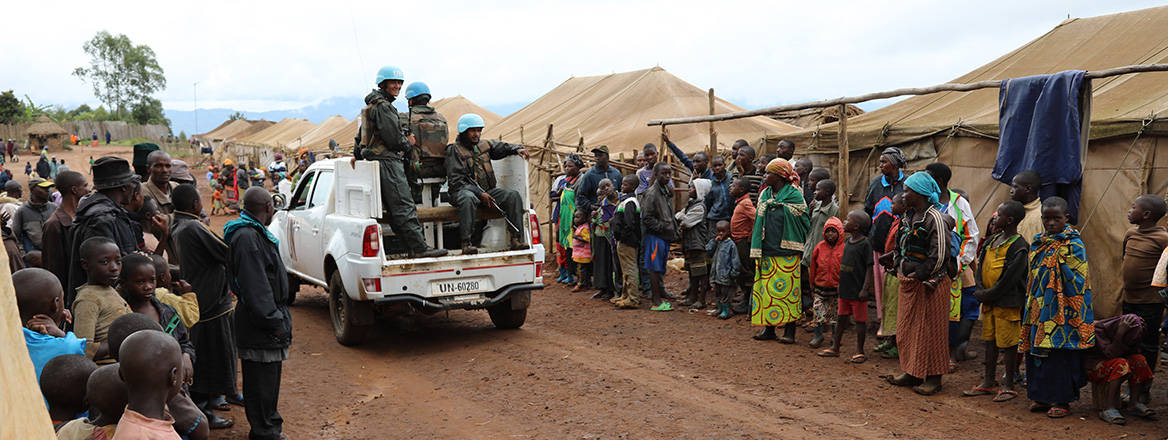Time to Look Again at the Concept of Stabilisation
20 Jan 2022 04:30 PM
With the past two decades of international stabilisation missions showing only limited successes and a long list of strategic failures, a re-evaluation is overdue.

The West’s withdrawal from theatres like Afghanistan and Iraq underscores a reduced appetite for the state building, democratisation and liberal peace-making that so dominated engagement with ‘fragile’ states for decades. Clearly, foreign intervention and cooperation will continue – it is hard to imagine a world in which powerful states cease counterterror operations completely or give up on military assistance or even development aid. One form of intervention, however, now faces an uncertain future: that of ‘stabilisation’.
The term stabilisation is seldom clearly defined. While some methods of stabilisation have a long history, the concept emerged within global discourse in the mid-1990s. The term was first referenced in the NATO Stabilisation Force in Bosnia and Herzegovina in 1996. As international policymakers gradually began to question the tenets of liberal peacebuilding from the late 1990s onwards, concepts of stabilisation and ‘stability’ came to dominate, first within US government doctrine (such as the 2004 establishment of the Office of the Coordinator for Reconstruction and Stabilization), and later in the UK (Building Stability Overseas Strategy, UK Stabilisation Guide, and Security and Stabilisation: The Military Contribution), the UN (Stabilisation Missions in Haiti and the Democratic Republic of the Congo) and the EU (Stabilisation and Association Agreement in the Balkans).
The growing focus on stabilisation coincided with the changing nature of warfare following the end of the Cold War, and the focus on supporting the emergence of liberal democracies, free-market economies, and functioning state institutions as a solution to violent conflict. Its compatibility with the War on Terror agenda subsequently lent it further credibility. Some have argued that the term is inextricably linked to a retreat from internationalism and the conflation of security and development agendas, in a kind of uninvited ‘cosmopolitan interventionism’. Regardless, stabilisation has been marked by an attempt to combine diverse forms of intervention, from military and governance support through to humanitarian aid, in order to produce sufficient security and political momentum to progress towards forms of long-term stability that meet the approval of intervening powers.
In the last two decades ‘stabilisation’ has become highly prominent in discourse around Western engagement within fragile and conflict-affected states, at times effectively re-badging everything from military offensives to reconstruction efforts, diplomatic engagement and support for political processes, as well as a multitude of other activities in pursuit of the concept of stability. A decade or more of application has followed, with highly variable but often disappointing results as far afield as Afghanistan, Iraq, the Democratic Republic of the Congo (DRC), Haiti, Libya, Somalia, northeast Nigeria, Mali, Syria, Yemen and more.
Interest in stabilisation among policymakers may wax and wane, but the problem of handling the political violence and instability that it is supposed to address will remain with us in some form
The term stabilisation continues to inform international responses. Stabilisation missions, instruments and operations are very much live worldwide. In addition to multilateral contributions such as in DRC, the UK is supporting bilateral stabilisation initiatives in Somalia, Nigeria and Mali. As recently as December 2021, together with like-minded donors, the UK Foreign, Commonwealth and Development Office awarded a multi-million-pound contract for stabilisation-oriented work in eastern Ukraine to US contractor Chemonics.
Yet a cursory glance at past stabilisation efforts shows only limited tactical successes amid a long list of strategic failures and retreats. Successes – such as the liberation of Mosul – have tended to be time-bound, area-specific or subject to heavy caveats. Later events have often overshadowed earlier gains – for example, in Bosnia or Iraq. If most previous stabilisation contexts exhibit continuing or worsening instability, what are the implications for policy and practice?
Is apparent failure down to poor execution and the oft-cited difficulties of resourcing, staffing, short-termism, coordination and the navigation of complexity? Is it partly attributable to the complexity of contemporary conflict and a competitive international environment which stabilisation alone could never solve? Or is there a more fundamental problem with the very concept of stabilisation and its unexamined assumptions? The nature of armed conflict and of international relations is changing, with new threats, technologies, actors and strategies coming to the fore, and a reflection on the stabilisation paradigms of the past is clearly overdue. Interest in stabilisation among policymakers may wax and wane, but the problem of handling the political violence and instability that it is supposed to address will remain with us in some form. Learning and adaptation must be priorities for those working in the field.
The views expressed in this Commentary are the author’s, and do not represent those of RUSI or any other institution.
Have an idea for a Commentary you’d like to write for us? Send a short pitch to commentaries@rusi.org and we’ll get back to you if it fits into our research interests. Full guidelines for contributors can be found here.